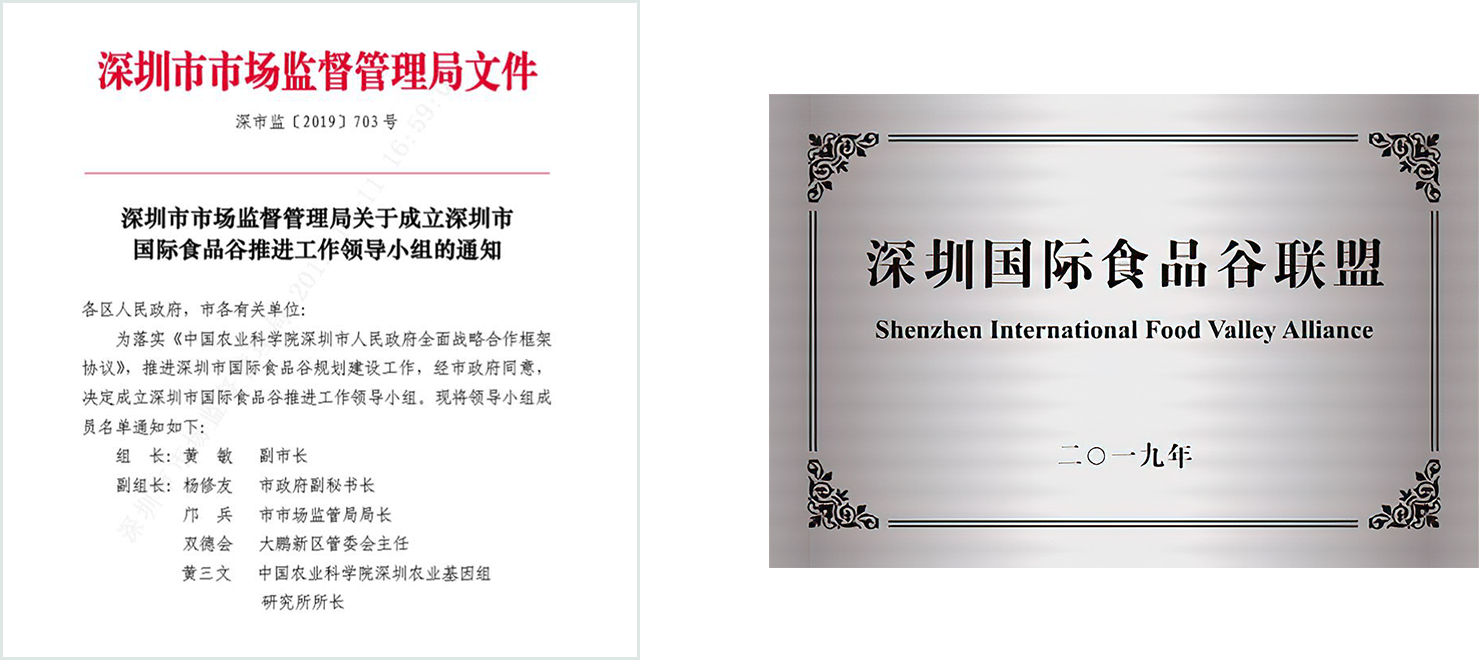Shenzhen International Food Valley

Referring to the Dutch food valley model, create the "Shenzhen International Food Valley". Promote the establishment of the Food Valley Promotion Work Leading Group by the Shenzhen Municipal Government, and include the Food Valley project in the "Key Tasks" of Shenzhen's Construction of the Leading Demonstration Zone of Socialism with Chinese Characteristics and the 2020 Shenzhen Municipal Government Work Report, creating a world-renowned source of food innovation and a leading demonstration zone for future food products, creating an innovative ecosystem for the future scientific research industry system, and providing important support for the Greater Bay Area and national food safety. With the goal of building a global food technology innovation hub, focusing on the three major fields of agriculture, food safety, health and nutrition in the future, we gather a group of world-class universities and research institutes, as well as first-class enterprise (R&D) headquarters, to become the original innovation center of global food technology. Focusing on the four core tasks of "improving traditional food, enhancing modern food, laying out future food, and prioritizing food safety," priority should be given to selecting industries with high technological content, high added value, low resource dependence, and strong environmental friendliness. Innovate the international food grain management system based on government driven, enterprise led, and expert participation models. Building the core area of Dapeng New Area; Build a "1+N" food security system with other districts in Shenzhen (including Dapeng New Area) as expansion areas, Shenzhen's corresponding assistance areas and surrounding cities as radiation areas, and "one valley+N characteristic planting bases". Strive to build the Food Valley into a world-class high-end food industry cluster and a leading demonstration area for the future agricultural and food industry in the international food industry, with active technological innovation, abundant product quantity, and an industrial scale exceeding 300 billion yuan, within approximately 15 years.
At the 12th Plenary Session of the 6th Shenzhen Municipal Committee of the Communist Party of China, "planning and constructing an international food valley" was included as a key task deployment and promotion for Shenzhen to build a demonstration zone for socialism with Chinese characteristics. Dapeng New Area has launched spatial planning work for the Shenzhen International Food Valley Pilot Zone. The Shenzhen Municipal Government has approved the establishment of a leading group for promoting food grain production. The research institute has led the establishment of the Shenzhen International Food Valley Alliance, which is composed of 78 universities, research institutions, and enterprises.

In November 2019, the 5th International Conference on Agricultural Genomics and the Shenzhen International Food Valley Seminar were held in Dapeng New Area, Shenzhen. The conference invited 15 domestic and foreign academicians, including Li Jiayang and Zhu Beiwei, as well as more than 700 scientists and entrepreneurs from the Shenzhen Municipal Government, Ministry of Agriculture and Rural Affairs, Chinese Academy of Agricultural Sciences, Dapeng New Area Government, as well as scientists and entrepreneurs in the fields of agricultural genomics and food research at home and abroad, to attend and jointly contribute to the construction of Shenzhen International Food Valley research plan.

In March 2021, the General Office of the Shenzhen Municipal People's Government issued the "Development Plan for Shenzhen International Food Valley (2021-2035)", which pointed out that it is necessary to draw on the beneficial experience of food safety strategies in developed countries or regions, based on the existing basic conditions of Shenzhen's food industry, leverage the advantages of technological revolution and technological integration, deeply implement the "storing grain in the ground and storing grain in technology" strategy, establish the development principles of "high technological content, high industrial added value, low resource dependence, and strong environmental friendliness", and focus on building three industrial clusters of "transforming traditional food industry, cultivating emerging food industry, and laying out future food industry". Around the ten key industrial fields, 100 university research institutes and research institutions are gathered to create 100 high-level R&D teams at home and abroad. Introduce 100 food enterprises with strong research and development capabilities, super large production scale, and ultra-high manufacturing level, and consciously promote the "three chain reconstruction" of industry chain addition, value chain multiplication, and supply chain connectivity.


